After four days’ riding, here’s my summary:
Overall
Considering the ease with which the folding form factor allows me to transport this bike, the Tern Verge S27h is a fantastic bike for short-notice, on-a-whim cycle touring – including gravel roads.
Pros
- The ease with which the bike can be folded and taken on public transport (airplane, bus etc.) cannot be overstated.
- Super solid-feeling bike, even over rough gravel roads – the fat tires are superb. For a 20-inch wheeled bike, this thing eats up rough terrain.
- The long wheelbase is awesome – the bike yearns to travel in an effortless straight line.
- Loaded up with heavy panniers, the bike shines – so stable.
- The cargo rack is superb – the low pannier rails are great.
- The seat post pump was very handy.
- Those BB7 disk brakes – so reliable and powerful.
Cons
- For gravel road cycling, this bike will never compare to a big-wheeled expedition bike.
- More care is required in picking one’s line through the rough stuff.
- On the gravel roads, I felt bumps more than I would have on my 29er touring bike.
- Softer wet patches felt slower than they would have on a larger-wheeled bike.
- On the morning of the second day of riding, I did a check of all the bolts on the bike. A disturbingly large number of them were loose, including the brake adapter bolts! This is clearly a factory issue, so make sure you check and tighten all bolts before heading off.
- No bottle-cage mounts(?!). Seriously, there is nowhere on this bike to directly screw a bottle cage onto the frame. For a dedicated tourer, this is very curious! (UPDATE 2015/5/27: Thomas, the designer of the S27h from Velowerks, was kind enough to give his opinion about this on my previous post here; his reasoning sounds perfectly sound…looks like I need to find a bottle cage adapter).
The bike
Developed in collaboration with Velowerk in Switzerland, the bike is Tern’s dedicated folding touring bike, the Verge S27h. It is built from the ground up to be a solid, versatile bike: front and rear racks, eccentric bottom bracket (allows for hub gears without chain tensioners), Avid BB7 mechanical disk brakes, wide (2.15 inch) tires, dynamo hub lighting, and a long wheelbase. The bike’s catalogue weight is 16.4kg – this is no lightweight.
Gears/drivetrain
In the gearing department, the bike came equipped with a Sram DualDrive system. This consists of a three-speed internal gear hub on the rear wheel, to which a 9-speed cassette is attached. That gives you 27 gears without a front derailleur. I really can’t be bothered with the maintenance associated with external gears (we live in northern Japan with 4 months of snow a year), so I had a new rear wheel built up using a Shimano Alfine 11-speed hub (I used a Velocity Aeroheat rim for the new wheel). Using an internal gear hub on the Verge S27h is a no-brainer; install, adjust the chain tension using the eccentric bottom bracket, and you’re set.
I’m also a fan of the Hebie Chainglider – a fully enclosed floating chainguard that keeps dust, mud, grit, and splashes of water away from the chain. The fully enclosed version only works with a single chainring at the front and a single cog at the back. That is, only if you’re running single speed or an internal gear hub. At present I have a 21-tooth cog on the back wheel, and a 42-tooth chainring. With the Alfine 11-speed hub, this gives me a gear range of approximately 19.7 to 80.4 gear inches. The original gear range on the bike, using the 46-tooth front chainring, SRAM 11-32 cassette and SRAM DualDrive hub, was 22 to 117 inches (link saved to PDF here).
Long story short, with the Alfine hub I have around the same ‘easy’ gear as the standard DualDrive setup, but have lost a little bit of the ‘harder’ gears (which I never use much anyway).
The Molesworth Muster Trail
The Molesworth Muster Trail is part of the New Zealand Cycle Trail. This spectacular part of the trail starts in Blenheim at the top of the South Island and ends in Hanmer, the quaint little hot spa town in northern Canterbury. The total length of the trail is 207km, and is classified as a four out of a five point difficulty scale – the trail is almost exclusively on gravel roads, and consists of around 3,300m of vertical climbing.
The route is remote – after leaving either Blenheim or Seddon, there are zero shops for 200km. The route runs through Molesworth Station; New Zealand’s largest operating farm. Water must be either carried or filtered/treated from rivers along the way. The roads are hard-packed gravel, but suffer from washboarding/corrugations for much of the route. And the climbs…oh the climbs. They are steep. While not as long, they are easily as steep as many I’ve cycled in Central Asia. Two basic campsites run by the Department of Conservation (DOC) are available for NZ$6 a night, as well as one free campsite at Heddon Bridge. Wild camping is not allowed anywhere within Molesworth Station. Furthermore, the road is only open to the general public without a permit between December and April. The road can be closed during this time, however. Indeed, it was closed to automobiles on this occasion due to high fire risk.
I started the ride in Picton after arriving from Wellington on the InterIslander ferry, so my route was this one, below.
Day One
Picton to Redwood Pass – 40km (Saturday 21st Feb, 2015)
My first day of this trip actually started in Sapporo City, in northern Japan. I live in Sapporo, and was heading to New Zealand to visit family. What better opportunity to throw the folding bike on the plane and hit the New Zealand back-country for a bit. I flew Air New Zealand, so there was no extra charge for the bike. I boxed the bike up, but in hindsight just a heavy duty clear plastic bag would have been less hassle.
A few transfers and around 20 hours later, I was in Wellington, the capital of New Zealand, arriving at 9:30am on Saturday morning. My wife Haidee was already in Wellington (there doing some home-based work on her PhD), and so we spent a meandering several hours cycling from the airport to the InterIslander ferry terminal, where I would head from Wellington to Picton, across the Cook Strait to the South Island.
In the end I arrived in Picton at 5:30pm on Saturday and promptly started heading south towards the beginning of the Molesworth Muster Trail, dropping by a supermarket in Picton on the way. Dusk on day one would see me wild camping on the Redwood Pass back-road half way between Blenheim and Seddon. I found out the hard way that the fence I pitched my tent next to was electric!
Day Two
Redwood Pass to Heddon Bridge – 80km (Sunday 22nd Feb, 2015)
I had a stiff tailwind from Picton to my campsite yesterday, but this morning I woke to a stiff southerly wind; not a great start to the day considering I had to travel south-west for the entire day.
I woke just on daybreak, and was on the road by 6:30am. I forewent breakfast, planning on cycling an hour or so before stopping for food. The day started with a stiff climb up Redwood pass. While it was only 200m in height, the road was loose gravel at times and steep; this would be the first test of the Tern Verge S27h on a steep gravel climb, and later a fast downhill.
The previous day I had bought a big loaf of wholemeal sourdough bread, Parmesan cheese, Dutch salami, and some fresh vegetables, so I stopped about an hour into the climb to make a sandwich. Only one car had passed in the entire 2 hours I was on the road. The silence, only broken by gentle birdsong, was exquisite.
It wasn’t long after breakfast that I hit the top of the pass, and hurtled down towards the sleepy little town of Seddon, where I would spend a few hours at the local Backpacker’s using their WIFI to send some urgent documents to my research collaborators. The Verge handled the gravel downhill OK. Not as fun as a 29er, but not entirely kill-joy-esque. The relatively fat 2.15 Schwalbe Big Apples I think help greatly in this regard – drop the pressure in them and they do a valiant effort at absorbing bumps and keeping the bike upright and stable.
After a quick lunch in Seddon, I set off for the Molesworth Muster Trail proper. I was away at around 12:30pm, and would not make the 55km to Heddon Bridge until 5pm.
The stretch of road from Seddon to Heddon Bridge climbs steadily along a mix of paved and gravel road, until about 20km from Heddon Bridge, where pavement is left behind for good. For much of the first 20km, the road is lined with vineyards, producing the wine that the Malborough region in New Zealand is so famous for.
As the wet road in the photo above suggests, the weather was a mix of very light rain, cloud and the occasional sunny spells during the three days I was on the road. This was certainly not a bad thing; it can get extremely dry and hot through here, and I was happy for the respite.
Once past the vineyards, the countryside becomes sheep country. Including the famous merino stud from which all that merino clothing goodness is made from.
I made it to the Heddon Bridge campsite by around 5:30pm after a grueling 80km ride. The last 15km or so felt like they would continue forever, and included numerous stiff ups and downs. At the campsite I met up with two other cyclists. Both were on more sensible mountain bikes.
Day Three
Heddon Bridge to Acheron Campsite – 105km (Monday 23rd Feb, 2015)
I only had 1 litre of drinking water left by morning, so I decided to get on the road before daybreak, to make the most of the cooler hours of the day. If the sun decided to shine today, I would be in trouble, since I wasn’t carrying any water treatment. Streams and rivers in New Zealand are known to carry giardia, and I wasn’t willing to risk it. I knew it would be 50km to the Cobb Cottage campground where I would have access to safe drinking water.
Circumstance would swing in my favor however, as the day was fairly dingy and rainy – perfect cycling conditions. Only once was the rain heavy enough to warrant a jacket and rain pants. The other times it was only a very light misty rain, enough to keep me cool.
The route carried on with its grunty steep ups and downs, all the while gaining altitude. Speedy descents were tempered by washboard road surfaces, which took plenty of concentration on the small-wheeled bike.
For all my effort, however, I was rewarded with an ever-increasing air of remoteness. By the time I arrived at the DOC campsite at the Cobb Cottage at 11:30am, I had only seen one other vehicle.
At the Cobb Cottage campsite, the volunteer DOC rangers greeted me with arms open, offering me a dry spot on their hut veranda so I could make myself a sandwich for lunch. When they offered me a coffee, I jumped at the chance. Amazing souls!
I spent an hour sitting and chatting with the ranger couple, and just as I was readying to leave, the two mountain-bikers from Heddon Bridge arrived. They would stop at the campground to stay the night, but since I was supposed to be in New Zealand visiting family, I decided to carry on and tackle the remaining, mostly downhill, to Acheron Campsite, a further 60km away.
While it is mostly downhill from Cobb Cottage to Acheron, there is one last big climb before the gradual downhill happens: Wards Pass. It is not a very long pass, but after a few days of remote cycling, it felt very steep indeed. Curious cows watched my every move as I cycled past.
Once up and over the pass, I hit the gloriously gradual downhill stretch of road across Isolated Flat. Imagine tens of kilometers of mildly potholed but very fast gravel, with a nice stiff tailwind. Once again, the small-wheeled Tern was not perfect for the task, but wasn’t useless either. It did the job.
The only souls I met along the way were two other cyclists, making their way up the gradual incline into the headwind…but they seemed in good spirits (see their adventures here).
This part of the route presented me with a few fun curiosities including shallow fords…
And massive skies.
I finally arrived at the Acheron DOC Campsite at 7:10pm, around 13 hours since I left Heddon Bridge. At least 11 hours of that was cycling. Despite the overall drop in altitude after Wards Pass, stiff climbs over bluffs and Isolated Pass meant that it was not all plain sailing.
The DOC rangers at the campsite were expecting me, and invited me in for a coffee. We chatted about Japan and different places they had been posted at. One of them had once spent 7 weeks on the Kermadec Islands without seeing another person for the entire time. These are an interesting breed, those DOC rangers.
I paid my $6 for camp fees, set up my tent, and was fast asleep by 8:30pm.
Day Four
Acheron to Hanmer – 22km (Tuesday 24th Feb, 2015)
This fourth and final day of the trip was a short one. Like every day on the trip, I woke before daybreak and cycled around 10km before stopping for breakfast. It was a cold morning as I cycled upstream along the Clarence River – I had to wear a hooded fleece and gloves!
Soon enough I arrived at the junction to head up over the final pass into the spa town of Hanmer. My time in the quiet remoteness of the Molesworth Muster Trail was coming to an end.
It was only a short hour before I hit the top of Jack’s Pass in the heat of a bright sunny day…
And careened down the other side into the relative bustle of the sleepy little town of Hanmer. Only to immediately head to the public library to catch up on all the school work I had left unattended for four glorious days of remote cycling.
From Hanmer I caught the 4:30pm bus to Christchurch. $35 (including the bike folded in the trailer).
For more detailed information about the Tern Verge s27H, check out Peter’s detailed overview here: https://www.cyclepeter.com/verge-s27h-folding-touring-bicycle-review/



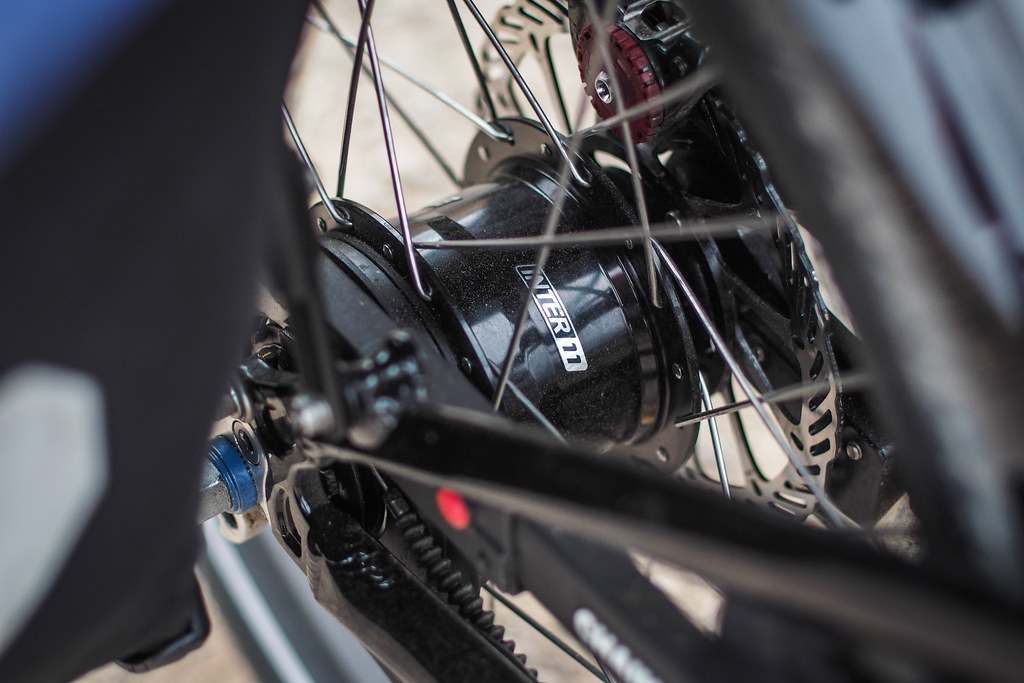



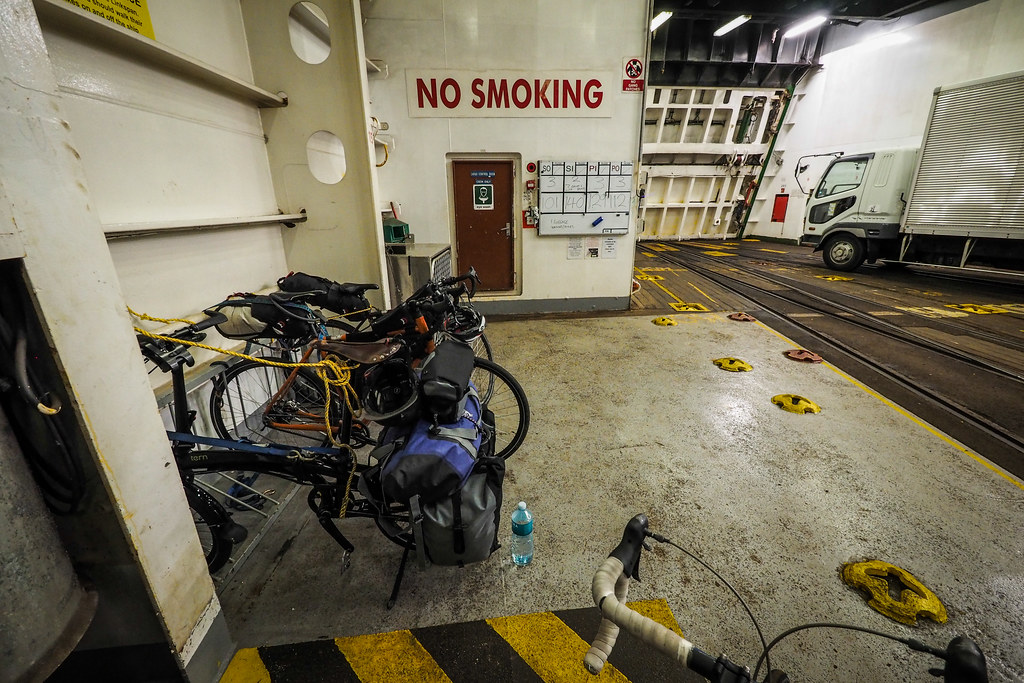


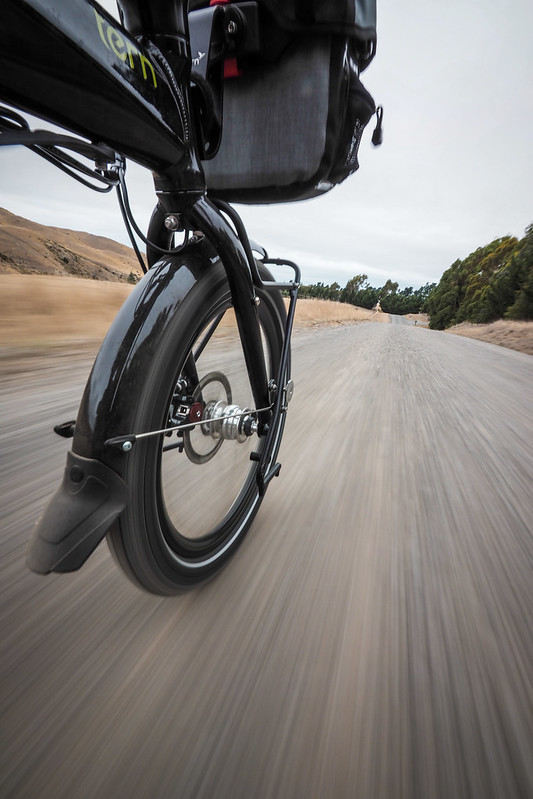
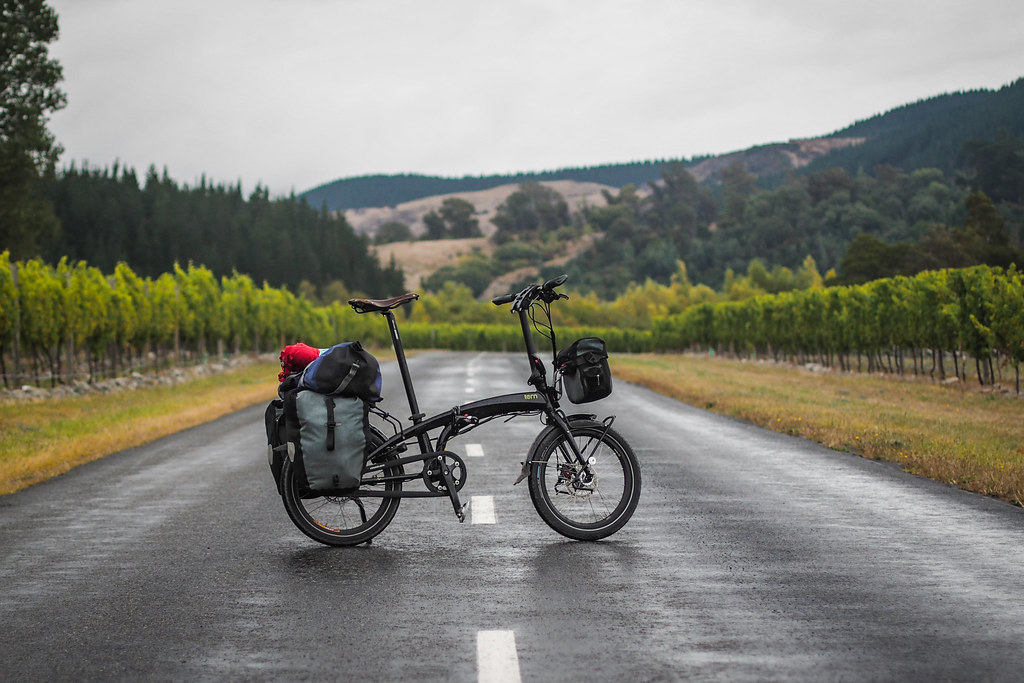
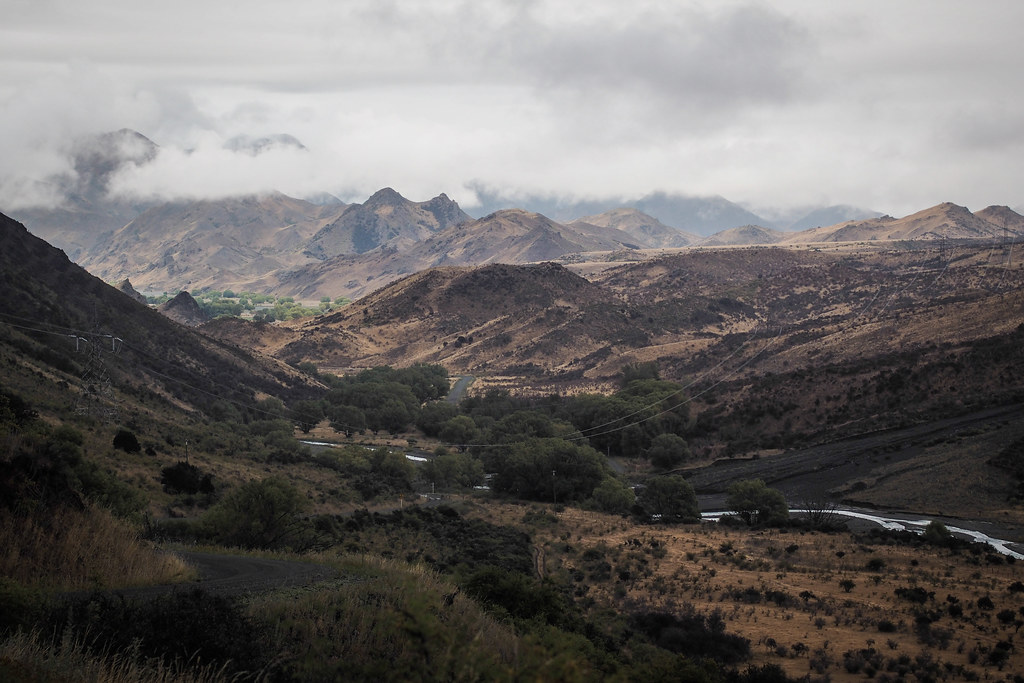






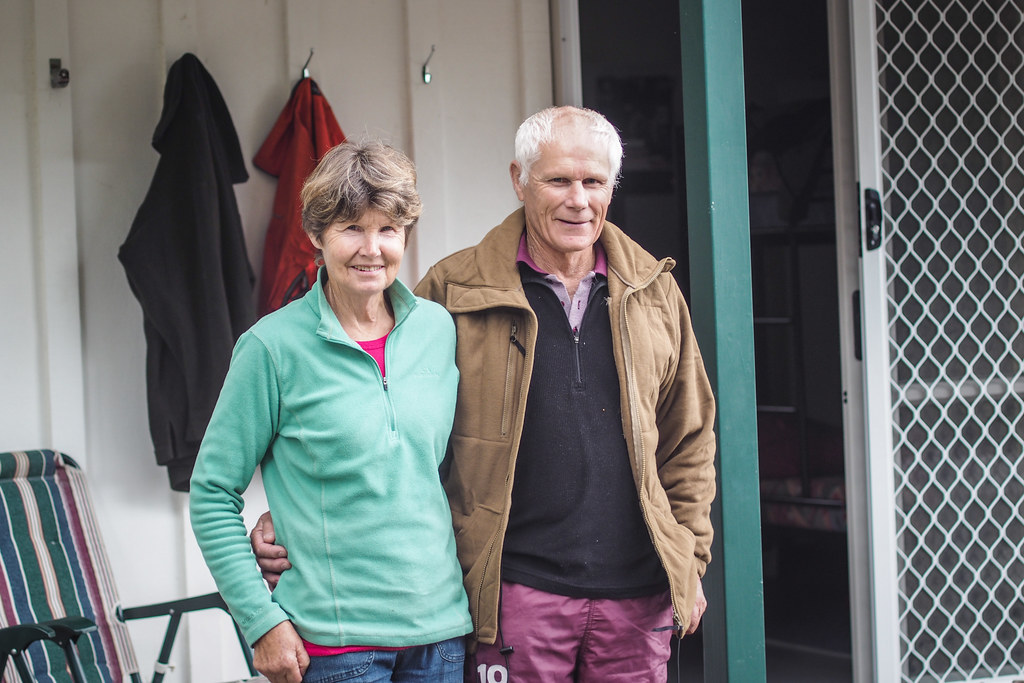
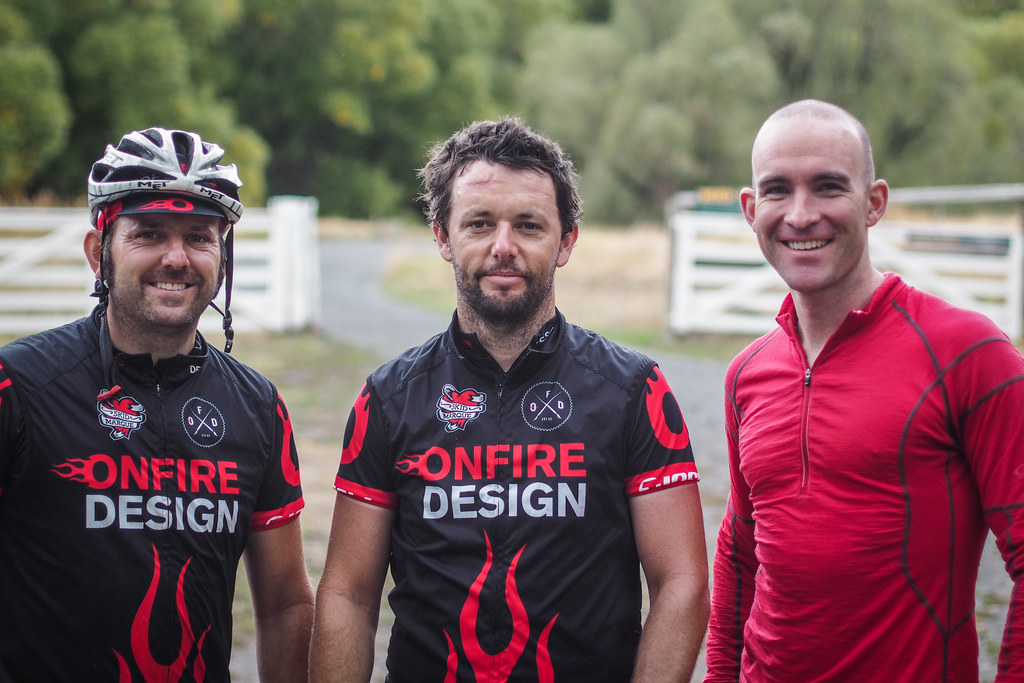

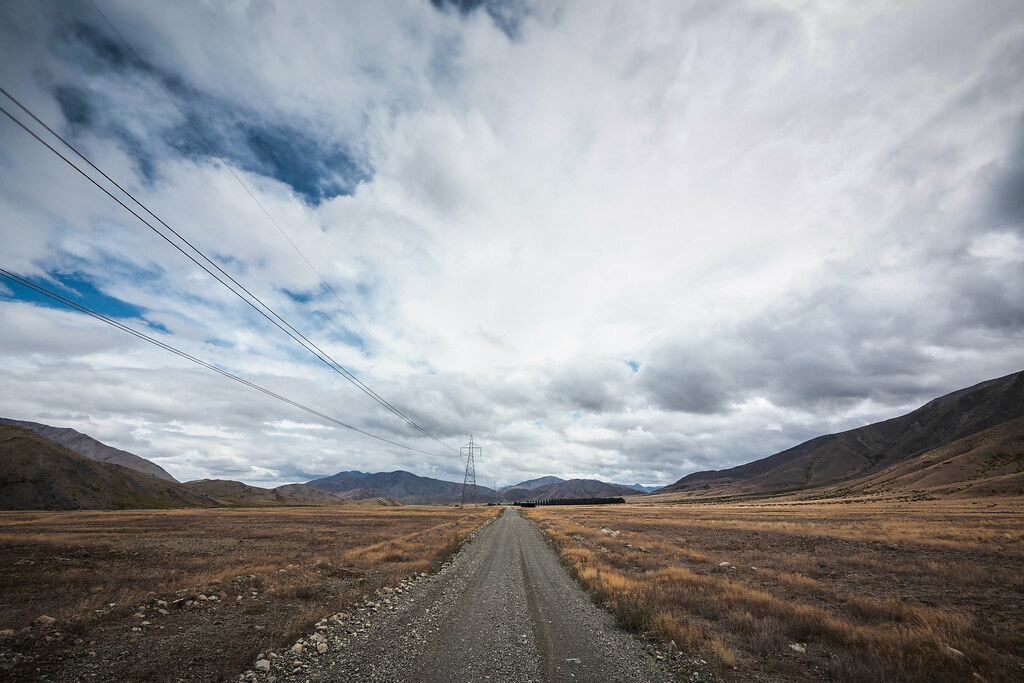
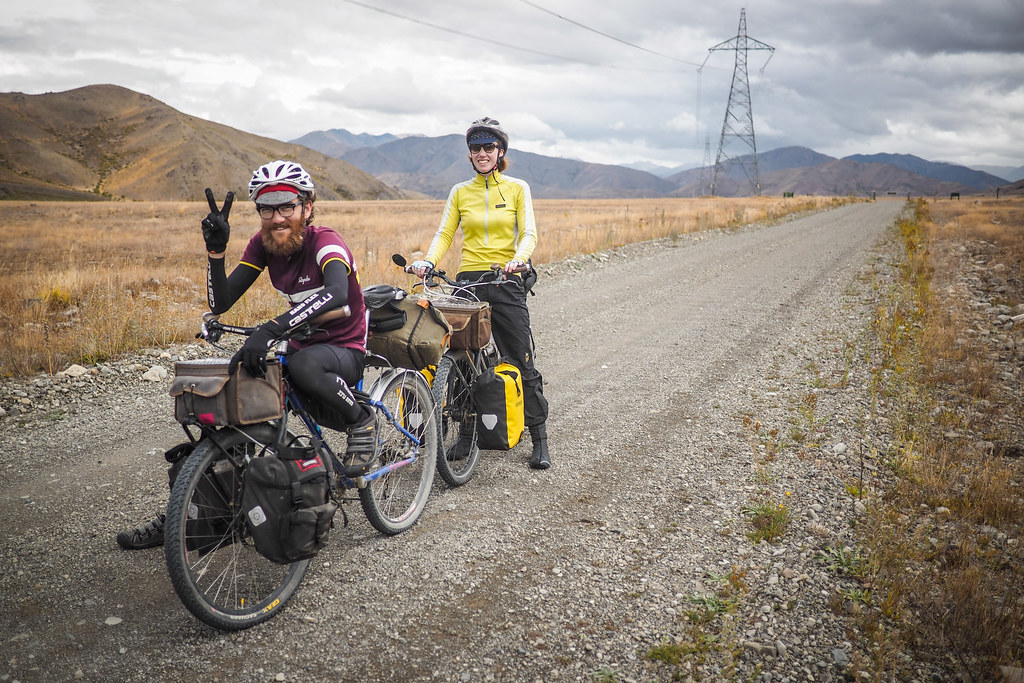

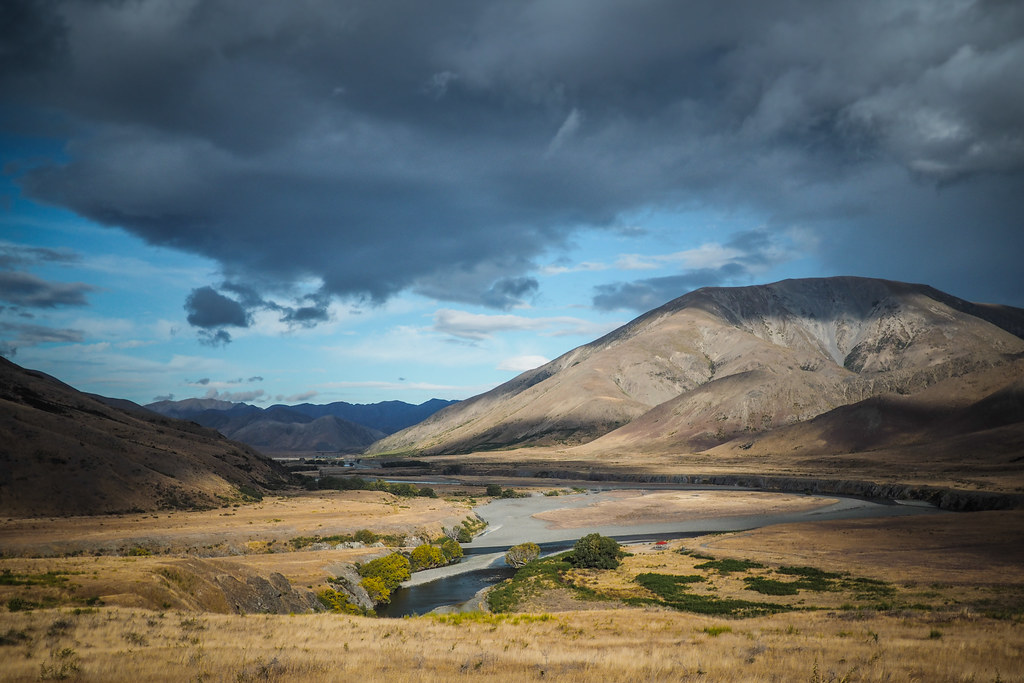
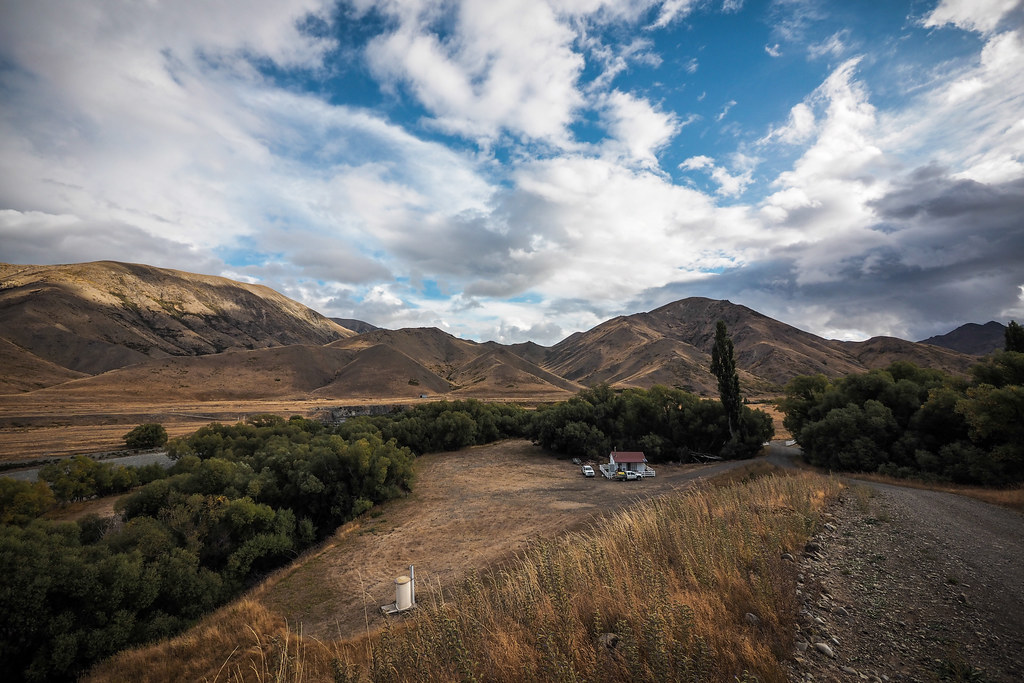
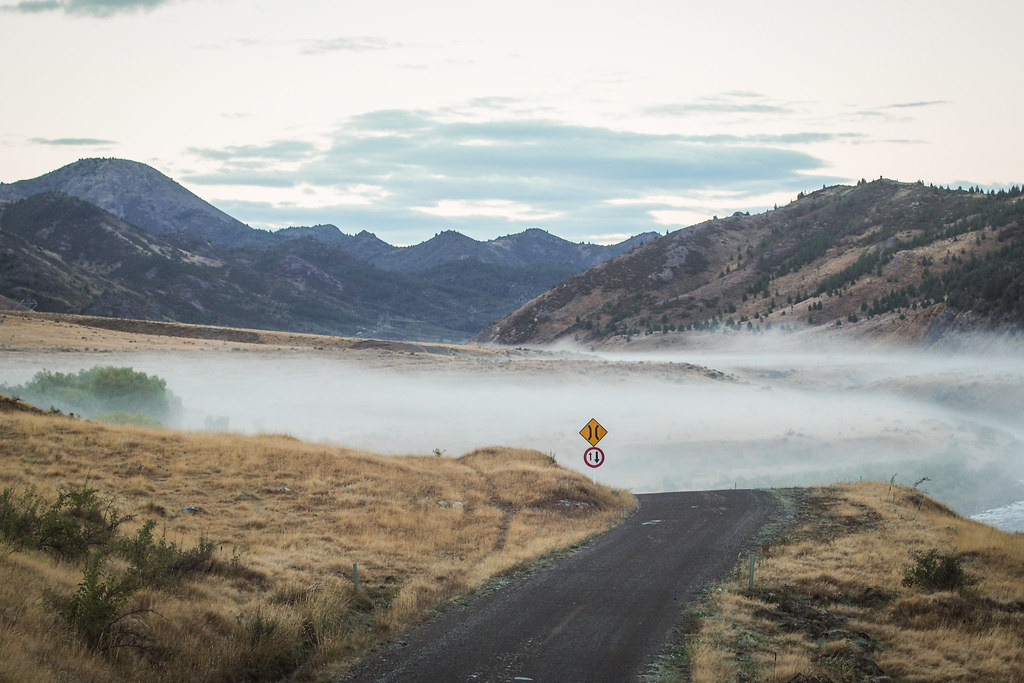
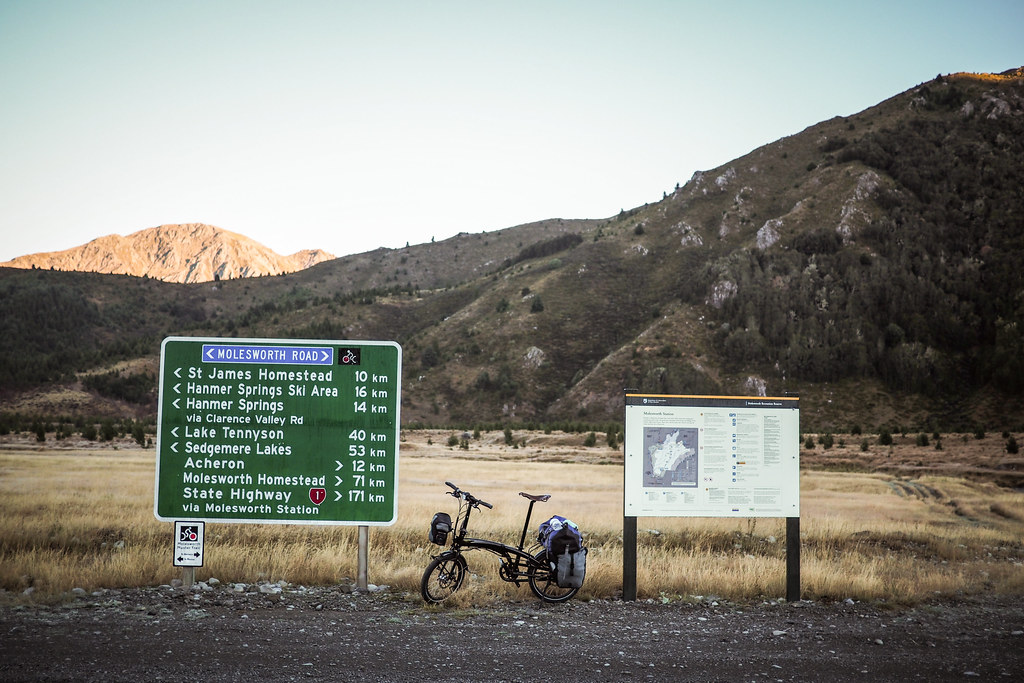
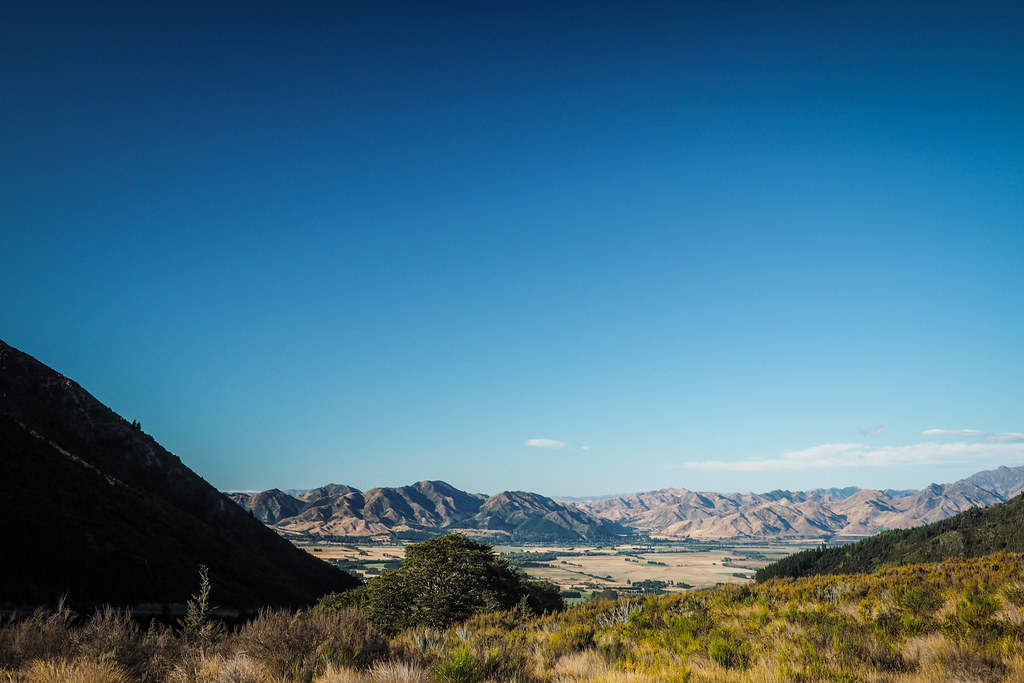






70 thoughts on “Tern Verge S27h Folding Touring Bicycle – A Gravel Road Touring Review”
It’s going to be end of mine day, but before ending I
am reading this impressive piece of writing to increase my
experience.
Brilliant report of a great Kiwi ride. Nicely illustrated. One I regretfully have not done. Have done mega rides though. Length of Japan (2004). Length of Britain (2006).
Thanks Roy. Sounds like you have had some great adventures!
Rob, I very much enjoyed reading your experience with the S27h. I have a technical question concerning your Alfine conversion. I am planning to purchase this same bike and hope to fit a Rohloff IGH on it. Did you have any problem with the chainline when you moved to the Alfine? Did you have to get a different bottom bracket spindle length? I read that you had to swap the crank but wanted to know if there was anything else you had to do to convert to an IGH. Also, can you confirm that your setup is chain driven and not belt. It would have been nice if Tern split their frame like on their S8i. The S8i probably would have been my bike of choice except that the front fork won’t accept a rack. Also seems the S27h is more Rohloff ready.
Thanks in advance for your help,
Dave
Hey Dave, thanks for the message.
Regarding the chainline – no problem whatsoever. No need for a different spindle length. The bike was designed with a Rohloff in mind – see the original Velowerk verison here: https://www.velowerk.ch/werx.html. By the way, I only replaced the chainring – not the crank.
And yes, it is all chain-driven. Unfortunately, there is no split in the frame. I guess the only option for adding a split in the frame would be to cut and machine the existing drop-out area in some way, as the seat-stays are formed aluminum (not the same diameter or shape along the length of them).
Make sure you check and double check with your dealer that the bike they sell you has the new updated OCL joint (standard on all Tern Verge Tour bikes from the middle of this year, I believe). The earlier OCL joints used screw-in pivot bolts, and I broke two (one on the first bike I bought, and then one on the replacement bike that Tern sent me). This was never a safety issue (the bolt would never fall out while riding), but renders the joint rather floppy! (I.e., useless).
The new OCL joint has a solid pivot shaft, so should be impossible to break. This new joint on the second replacement bike has certainly not developed the play that the old screw-in pivot bolts developed after only 6 months of riding, so so far so good (I’ve had this new replacement bike for 6 months now).
In any case, Tern has been awesome to work with during those times I needed the replacements, so no complaint with customer service!
Just a follow-up regarding the hinge pivot bolts, see the following picture to see what I mean:
https://www.velowerk.ch/images/2011_WERX-HINGE.jpg
This is the old OCL joint design. Notice the two screw-in bolts, one from the top and one from the bottom (with the bushings). These have been replaced with a solid pivot shaft.
I plan to do a followup review after winter, touching on this very important point!
Rob, thanks for the info. I just bought the S27h today so I will have to check OCL joint. Can the new style be retrofit if I have the old style?
Also, I noticed that the Alfine 11 is bolted to the rear drops and isn’t a quick release version. Is there a reason you didn’t go with a QR version of the Alfine? Granted, I know nothing about the Alfine but I am pretty sure that the QR version of the Rohloff would work.
Thanks again,
Dave
Rob, a couple other things…what size front chainring did you settle on and what size rear sprocket. Do you know the gear range you are running?
Also, do you know what size chainring comes with the bike standard? Do you happen to know the bolt pattern?
Concerning the OCL joint, I bought a 2015 S27h that is still brand new from an authorized Tern dealer….I suspect that since it is the older model that it will come with the old style joint unless they recalled them at some point. Regardless, I think the bike has a 10 year warranty so I will use it if required.
Cheers,
Dave
Hi Dave,
The old OCL hinge pivots cannot be retrofitted with the new versions. But like you say in the other comment, you can use the warranty if needed. As for the Alfine hub, Shimano does not make a QR version of that hub (as far as I am aware). So that’s the only reason that it is bolt-on.
As for the chainring question, I am currently using a 21-tooth cog on the back wheel, and a 42-tooth chainring (this one: https://www.starbike.com/en/specialites-ta-chainring-alize-130-mm-middle/ – bolt pattern is 5-bolt 130mm PCD). With the Alfine 11-speed hub, this gives me a gear range of approximately 19.7 to 80.4 gear inches (https://www.14degrees.org/en/wp-content/uploads/2015/02/tern-verge-s27h-gear-inches-shimano-alfine-11.pdf). However, I would prefer a slightly larger cog at the back, for a little bit more ‘easy’ gears for going uphill. The original gear range on the bike, using the 46-tooth front chainring, SRAM 11-32 cassette and SRAM DualDrive hub, was 22 to 117 inches (see ‘gear inches’ section for the Tern S27H here: https://www.14degrees.org/en/wp-content/uploads/2015/02/tern-verge-s27h-full-specs-list.pdf).
Cheers,
Rob
Thanks Rob….that gives me a lot of info to work with. The only thing I need to check is the chainline measurement with the existing crank. The new Rohloff hub with splined sprockets requires at 57mm chainline —the old one uses a 54mm. I just have to make sure I have everything figured out before I take the expensive plunge…..I am thinking of keeping the 46 in front and going with a 14 in the rear for a 17.1 to 90 ratio. I will probably hold off on the conversion until next summer but when I do it, I’ll make sure I post a link to my blog.
Dave
Great blog – very inspiring!
I have a Tern Ecliipse P9 which minim the process of upgrading for touring on the NW coast of Scotland. By strange coincidence one of the key upgrades I’ve been considering is the Alfine 11 gear hub.
Having run one for a while, can you give an opinion on reliability and performance please? – id be grateful for any feedback!
All the very best
John
Hey John,
I absolutely love the Alfine 11. Great value for money as far as internal gear hubs are concerned. I’ve had mine for over a year now and no complaints! This includes cycling in snow, on gravel. Another three bikes I own have the Alfine 8-speed, and they are great as well. If I was to have the option in the future, and considering how durable both the 11-speed and 8-speed versions are, I’d be tempted to go for another 8-speed, rather than the 11-speed. I’m not 100% convinced that the extra cost is worth the extra 3 gears…although it will depend on what you are doing with the bike; a lot of hilly touring might warrant the extra gears.
Hope this helps!
Hi Rob
Thanks for the feedback which pretty well matches the opinion of my bike builder.
I’ve heard various horror stories about “bad” Alfine hubs with oil leaks and gear selection issues but on investigation a fair proportion may be due to early model quality control issues and lack of maintenance.
I’d contemplated a rholloff hub but despite the incredible reliability the cost is just too much (3 times what the P9 cost me!)
The bike won’t get much use but what use it gets will be hard (loaded to maximum weight and up plenty of hills!)
My pannier setup is similar to your own with Ortlieb front rollers. On the rear I’ve got MSX mainstream Avant Guarde 55’s and on the luggage truss an MSX bar bag – not light kit but very good build quality with excellent fittings.
Love your blog – really inspiring!…can’t wait to get up to Scotland for some wild camping and fishing!
ATB
John
Hi! As transport on the plane?
Hello,
I saw that you were using the Tern Luggage Truss with the Tern Tour Bag. Do you recommend shortening the brake and derailleur cables when using them? I use the Tern Kanga Rack and the cables tend to interfere a bit when steering.
Hey Steve, I am indeed using the Tern Luggage Truss, but I am using an Ortlieb Ultimate handlebar bag. I didn’t have to shorten the cables at all, and they don’t interfere with steering.
Looks like I may have to shorten my cables a bit. From your pictures, your cables don’t seem to extend beyond the Luggage Truss. My cables actually bulge out beyond the luggage truss but when attaching the Kanga Rack, I have to tie up the cables to the handlepost.
Rob, my wife and I picked up a pair of Tern Verge s27h bikes recently, but we are stuck on how to attach our Ortlieb handlebar bags. Is the Tern Luggage Truss all we need?
https://www.nycewheels.com/tern-folding-bike-luggagetruss.html
Thanks!
Andrew
Hey Andrew! Great to hear from you. Yup, the luggage truss is all you need (so long as it has the Klickfix adapter, which I believe it does). You can use the Klickfix adapter that comes with the truss with the Ortlieb handlebar bags, no problem. Actually, I use a Klickfix adapter on my other (non-folding) bike also, instead of the Ortlieb adapter…a little easier to fix and remove the adapter than the Ortlieb one with their one-time-use cables!
By the way, are you planning any specific tours on the Terns?
Dear Rob. Going for a long trip 2.000km with a tern link p24h. Thinking which tires should i take, it was good your experience with 20 x 2,15, people say it makes you slower etc? What do you think? Thks a lot!!!! 🙂 Adrian from Spain
Hey Adrian, thanks for the comment! I’m sure you’ll love your bike trip! My preference has always been for fatter-than-‘normal’ tires. The reason is that they are so much more comfortable. And this is particularly important on a 20″-wheeled bike! Plus, see Schwalbe’s analysis about fat vs. skinny tires: https://www.schwalbe.com/en/balloonbikes.html. On less than perfect road surfaces, wider tires actually have less rolling resistance, because you can have them at lower pressure, which means that they roll over imperfections in the road better.
I see. Thank you Rob. That is what i was thinking also 🙂
I appreciate your answer
This point that Schwalbe makes is the key, I think:
“Racing bikes use quite narrow tires, because they are lighter and accelerate faster. But at normal speeds of up to 20 kph wide tires roll easier and are above all more comfortable.”
Hallo There
Beautiful pictures!!
I have a question about bike s27h. If you have to chose again what will be your choice 24″ wheels or 20″
I am looking for Tern bike but can not decide on the wheel size .We do a lot gravel roads The new TERN Tour for 2016 .Thanks
Hi Iwo, thanks for the question. If you’re doing a lot of potholed gravel roads, then I would recommend the 24″. If the gravel roads you usually travel on are smooth well-packed gravel, then 20″ would be OK. I chose the 20″ because it folds down slightly smaller, and there is a larger selection of tires available (I really wanted to be able to fit studded tires on it for winter). If you’re not too concerned about the folded size, then the 24″ would be better for rough roads and long distance.
My name is “John” and i am from São Paulo – Brazil. I looking your website, your travels and your life style…. and love all…
i ride in foldbike too… but i have a basic fold bike… a big cycle-hugs for you… and thank to share your experience to me…
Obrigado!!! (thanks) joaozinho
Great fun to read your report. I am curious if you had considered a Rohloff Speedhub and gates belt drive like the Dahon MU. This cost $1000 more but would outlast the bike. Second, there were some reports here in Berlin that Tern had a frame issue (cracked) including injuries. Was your S27H recallled? Thanks again for the detailed journal. Merry Christmas. Akaimashite Omedeto Gozaimasu.
I did consider the Rohloff, but the high cost, and the fact that a friend was selling his old Alfine 11-speed encouraged me to use the Alfine. As for belt drive, you can’t use belt drive on the Tern Verge S27h, because the rear triangle is not split.
I’ve also heard about the early-model Terns breaking, but apparently they’ve solved that issue now with more reinforcing on the weld to the OCL joint. My S27h was not recalled.
Took me time to read all of the comments, but I truly enjoyed the write-up. It proved to turn out to be Very helpful to me and Im particular to all the commenters here It is always fantastic whenever you can not just be informed, but also entertained Im positive you had fun writing this post.
In the complicated world we live in, it’s good to find simple solutions.
Neat trip and test for the bike. I think my tern p24h has the the same joint bearings….? I’ll have to order spares from overseas as this is something I want to be prepared for. Bought my bike in June and have commuted across from diamond harbour for 6 months now on ferry and bus through tunnel. Trouble free folding onto the bus. Only using the mid joint. Did the bearing swap go well? Was it easy? Tools used?
I paddled across lyttelton harbour yesterday en route to last day of work in a packraft with the bike folded across the front and covered by a pvc coat. Ortleib back roller classic behind me for back support in my kokopelli boat. When I got to lyttelton the bike was unfolded and stood up on its stand, paddle broken down, boat packed into pannier and I rode over dyers pass to chch. The ride home was up rapaki and along the summit road over castle rock and down the bridle path. I have maxxis holy rollers on the bike and run them soft as I can at 84kg plus rack load. It was very well mannered up rapaki with grip and even popping the front up down the Bridle path over all the wooden drains down to the fish & chip shop and ferry. One capable folder as the bridle path is singletrack in places now. Using koolstop pads is the only way to go. Original pads wère stripping bits of alloy off the rims and wore out fast. Bad news as the alloy chunks in the pads were grinding the small rims out
Bearing swap was fairly straight forward. No specific tools needed. But from what I hear, the Dahons use non-replaceable metal bushings? I’m not entirely sure though.
Hi,
I was wondering which panniers you are using, they look perfect sidewise.
Great photography by the way!
Thanks,
Peter
Thanks Peter! The panniers are Ortlieb Back Roller Plus, with a Seattle Sports drybag duffel on top.
Rob,
I guess no issues with the upper hooks, but can the bottom hook of the Back Roller hook nicely unto the Tern Cargo rack? Would be great if you can post a close-up pix. Thanks in advance.
Hey Lee, yes, the bottom hooks do fit onto the cargo rack…you just need to adjust the location of the hooks.
Hi there, I am in Sapporo at the moment and looking to buy a folding touring bike to tour Hokkaido. Did you buy Tern in Japan? Or do you have any recommendations for what folding bike to buy here?
Hey Jo. I bought my Tern Verge S27h from Minami-Kaze Cycles. They’re a folding bike specialist shop in Sapporo. I paid 230,000yen or thereabouts for my bike (a fairly normal price for that bike no matter where you live in the world). Location of the shop is here:
https://www.google.co.jp/maps/place/%E5%8D%97%E9%A2%A8%E8%87%AA%E8%BB%A2%E8%BB%8A/@43.0490834,141.3739422,17z/data=!3m1!4b1!4m2!3m1!1s0x5f0b2a2d1f120145:0xfa3d82e4315e3f54?hl=en
Oh and by the way, I know that he’s got one Tern Verge S27h in stock at the moment.
Thanks Rob. Really appreciate the quick reply!
I’ve seen that you and others have used the Tern’s bicycles on some long and rough rides. Have you noticed any fatigue or flexing developing in the main joint of the frame. I’ve had two Dahon bicycle (one being the TR) weakening and developing play in the joint. I’m not heavy or an extreme rider either. Just curious if Tern developed a stronger frame and joint.
Interesting you mention this, because the OCL joint on my Tern Verge S27h has become very loose, probably due to the thrashing I give it on gravel roads. But, the good thing is that the Igus bearings (plastic bushings in the joint) can be replaced (https://www.ternbicycles.com/features/igus-bearings). So I’ll be doing that when I get back to Japan (currently in the UK). I’ve ordered three sets of the bearings through my local bike shop, because they’re super light, and will now be part of my general tool kit that I take touring.
Well, that is an upgrade over my Dahon joint. If the joint can be serviced from the field with a replaceable bearing. From what I know about the Dahon joint, it requires drilling out the joint rods and pressing in new ones. A job beyond by ability and tools.
I’m sold on the Tern bicycles and company’s philosophy of building things to last.
Hi Rob,
I made my first long trip last weekend. Manchester to Liverpool – 64 kilometers
The machine is sweet and really comfy. I miss my old Kona Sutra 2014, but this baby is amazing.
I change the saddle for a Brookes C17 and the handlebar grips for Ergon GP5. Also I add two Zefal Spy mirrors and a Garmin Edge Touring plus GPS.
I “fix” the problems with panniers using the Upper rails on the cargo rack (My Ortliebs could be used in both sizes)
https://scontent-lhr.xx.fbcdn.net/hphotos-xpa1/v/t1.0-9/s720x720/11146200_10153182557274831_6663208677846295603_n.jpg?oh=4194109bf85371c446ce96d236ff20a6&oe=55D1AF50
Cheers
Thanks for the update Mario! Those handlegrips look very comfy 🙂 Also good to hear you managed to sort out a solution to the pannier issue!
Thanks for that review and the beautiful photos. I have just done my first review here and linked it to your site.
https://www.cyclepeter.com/verge-s27h-folding-touring-bicycle-review/
Peter
Thank you Peter! I’ve added a link to your review at the bottom of my post; thank you for the effort in taking such awesome photos detailing the details of the bike!
Hi
Somehow I just came across this – crazy – I live in Dunedin; own a Tern p24h and went touring on it for the first time earlier this year (early Jan). Can’t believe there’s another mad cyclist out there keen enough to tour on 20 inch wheels! Are you kiwi? Are you coming through Dunedin at all? We need to meet
Virginia
PS I am presently in Sapporo with the bike so meeting any time before 26 of March would be impossible…
As some inconcievable twist of fate would have it, I work at Hokkaido University in Sapporo. So how about lunch today?
Hi Rob,
Beautiful pictures.
I’m going to buy the Verge S27h in the next few weeks, I like a lot your gear setup but I’ll keep the SRAM Dual Drive that comes with the bike. Do you know if there is something similar to your Hebie Chainglider but compatible with the original gear setup?
Cheers
Hi Mario, thanks for the comment! The DualDrive was quite nice, just not the best for where we live in snowy northern Japan. Also, I found that my panniers would hit the DualDrive gear-changing mechanism on the back wheel, so you may need to add spacers between the rack and panniers to keep the panniers away from it…
But in any case, you’ll still be getting an awesome bike.
As for the chainglider, I’m pretty sure that a *fully* enclosed chainguard for a derailleured bike does not exist, but Hebie does produce this: https://www.hebie.de/en/protection/chainguard/chainglider/359/. That looks quite nice, at least in terms of keeping some of the chain covered. And it would work with the DualDrive setup. Note that you’d have to change the front chaninring to either 38-tooth or 42-tooth (I think the bike comes stock with 46-tooth). The Hebie Chaingliders are nice because they just ‘float’ on the chain, rather than needing adapters etc to clip them to the frame etc.
I hate to think exactly how you found out about the electric fence!
(I remember Grandad saying something like you should never eat small green vegetables on one?)
That is quite random…but as for how I found out, it was nothing as exciting as what you may be imagining…I leaned up against it, with the wire running the entire width of my back. It got me good. Not fun!